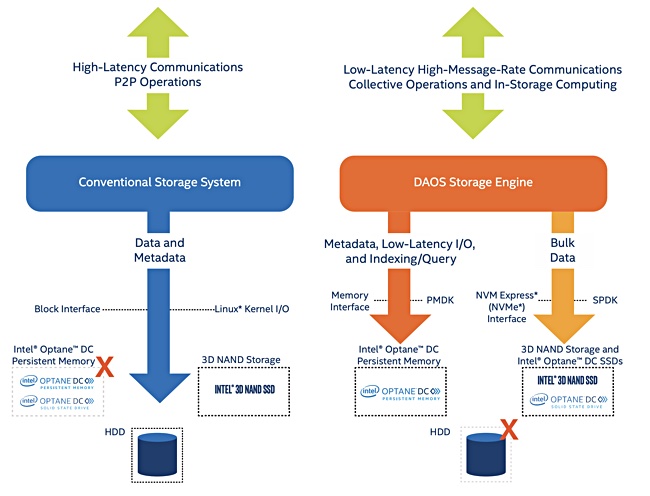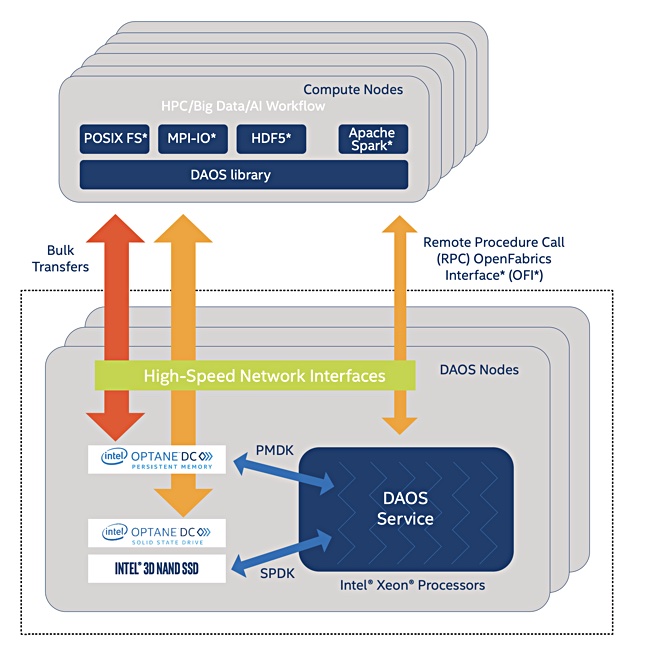Intel’s DAOS came second in the 2019 IO500 supercomputing file speed list, behind WekaIO but beating the more familiar faces of Lustre, Spectrum Scale and BeeGFS. Let’s take a closer look.
In a nutshell, DAOS – Distributed Application Object Storage – is Intel’s Optane-using file system for high performance computing. Intel spent many years developing the extreme scale parallel access file system under the auspices of the US Department of Energy Fast Forward program. Intel envisages DAOS as the successor to Lustre – which may be one reason why it sold its sold its Lustre assets to DDN in 2018.
Among other things DAOS is a way to seed Optane memory in supercomputing and high-performance computing (HPC) installations.
A 2015 SNIA presentation deck presents DAOS as suitable for exascale system use and designed to use NVRAM and persistent memory with lower-than-flash latency.
The open source software creates a scale-out object store optimised for Intel CPUs and Optane DIMMs and NVMe SSDs. DAOS has high bandwidth, low latency and high IOPS and operates in user space with full operating system bypass, according to Intel. IO operations bypass the Linux kernel, saving time.

Metadata is stored on Optane for fast access, with bulk data on the SSDs. Also, small IO operations are staged on Optane before going to the SSDs.
This means DAOS-using HPC systems are likely more expensive than those using Ceph, Lustre, WekaIO’s Matrix or Spectrum Scale. DAOS provides multiple data copies, no replication, journalling or erasure coding and is therefore less resilient than competitors.

DAOS lacks the native POSIX file access that many HPC applications need. Instead, it gets its POSIX capability by using a foreign layout feature in Lustre, according to Glenn Lockwood, a storage architect at NERSC. DAOS is then an entity in the Lustre namespace that looks like a Lustre filesystem.
Lockwood suggests DAOS is “at technological parity with other high-performance all-flash parallel storage systems like WekaIO and VAST“.
In our view Intel is positioning DAOS as another Optane adoption hook. HPC folks are hooked on speed. Give them DAOS for free and Optane DIMM and SSD sales will follow. As a bonus, AMD gets locked out of DAOS-using installations since Optane persistent memory require Intel CPUs.
Finally, we note WekaIO’s pole position in the 2019 IO500 HPC file system performance league table. WekaIO’s Matrix edged Optane DIMM and SSD-using DAOS. How much faster can it go when it too is used in conjunction with Optane?








